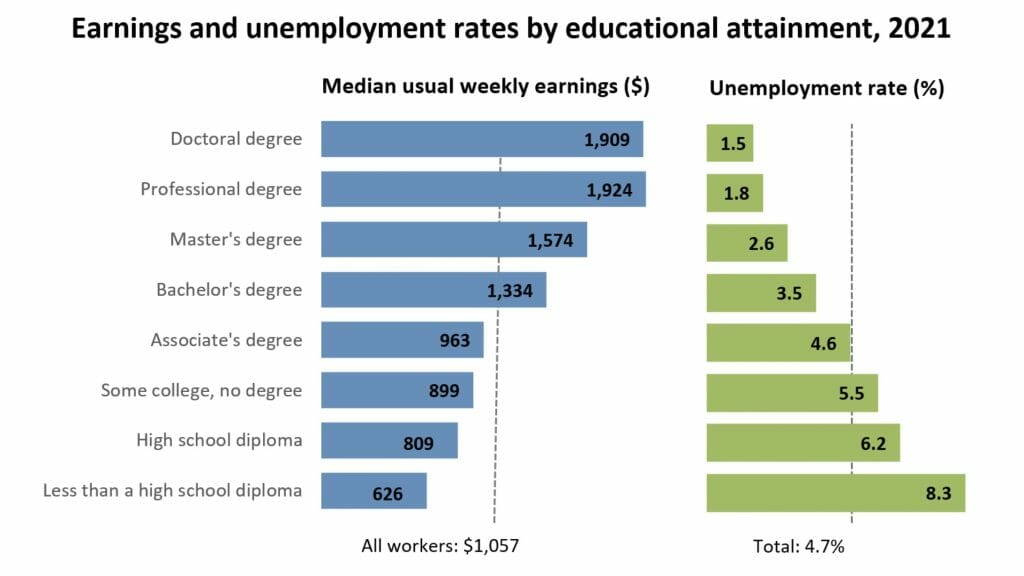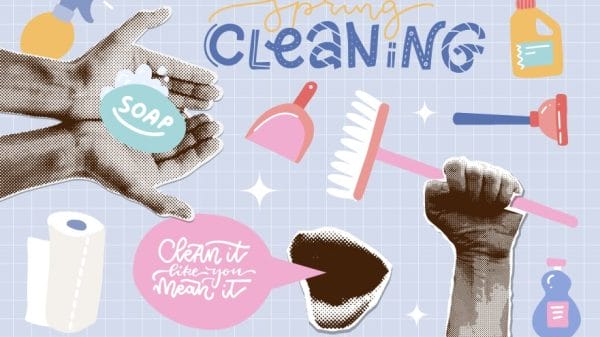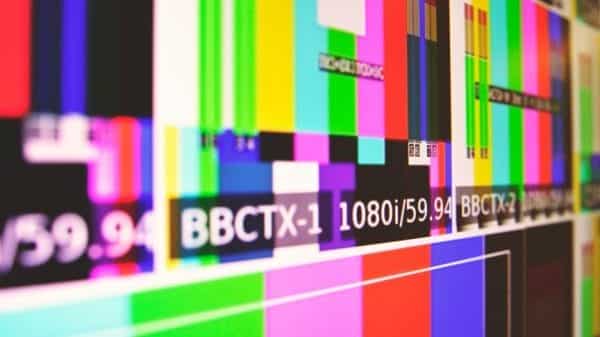Undergraduate enrollment numbers have been on a decline for several years, with the pandemic quickening this decrease. In fact, since fall 2020, the number of students enrolled in college has dropped by more than 1 million.
Pre-Pandemic
Enrollment numbers in undergrad and grad programs have been decreasing since around 2012. Between 2011 and 2019, college enrollment nationwide fell by 11%. Elissa Nadworny, an NPR correspondent, cited two main reasons for the decline: the job market and changing U.S. demographics. Jason Dewitt, a research manager at the National Student Clearinghouse Research Center, explained that college enrollment tends to go down when the economy’s good. And, lower birthrates have led to fewer high school graduates, thus shrinking the pool of prospective students.
Post-Pandemic
In fall 2020, National Student Clearinghouse tracked a 3.6% undergraduate decline compared with a year earlier. This decrease continued into spring 2021, with enrollment down nearly 5% from a year before. Community colleges, specifically, saw a dramatic decrease, as they make up more than 65% of the total undergrad enrollment losses this spring.
“There’s a decline, which means there are less students getting an education. That is the tragedy, that less students are getting an education, because we know how important education is to a successful future.”
Heidi Aldes, Spring Numbers Show ‘Dramatic’ Drop in College Enrollment
Heidi Aldes, dean of enrollment management at Minneapolis College, attributes the decline to multiple factors. Reflecting on conversations with students, Aldes sees being online, the “pandemic paralysis” associated with COVID, and finances as the major contributors to the decrease. Additionally, Aldes mentioned that a disproportionately high number of students of color withdrew, adding to existing equity gaps.
Effect on U.S. Economy
For colleges, lower enrollment means less tuition being paid, at a time when colleges are already strained due to the pandemic. Across the country, universities have announced layoffs and canceled sports, majors, and entire departments. Without federal or state money, colleges may be forced to increase tuition, thus alienating more students.
And, when fewer students go to college, even fewer graduate and move on to high-paying jobs.
“College is the best chance you have to get into well-paying jobs in this economy. It’s not the only path, and it’s certainly not a guarantee, but it’s the best path we have right now. And so, if more students are thrown off that path, their families and communities suffer, and our economy suffers because businesses have fewer skilled workers to hire from.”
Doug Shapiro, Head of National Student Clearinghouse Research Center
Tolani Britton, who studies the economics of higher education, says benefits such as an increased chance of social inclusion, lower infant mortality rates, better maternal health, and a decreased likelihood of experiencing food or financial insecurity are linked with higher education. Additionally, one study by Georgetown University found that bachelor’s degree holders “earn a median of $2.8 million during their career, 75% more than if they had only a high school diploma.”
The direct loss to the economy is the workers themselves, as more jobs in the U.S. require post-secondary training. Without workers, businesses suffer, and when businesses suffer, so does the economy. Britton claims that business struggles can lead to decreases in tax revenues, higher prices for goods and services, and delays in the production of goods and services. Thus, decreases in college enrollment have individual, communal, and social economic consequences.
Higher Education Gap
While undergrad enrollment is dropping, though, grad programs have seen an influx of students. That means there are more students with bachelor’s degrees earning more credentials while fewer students are earning even their bachelor’s.
“It’s kind of the educational equivalent of the rich getting richer. Those gaps in education and skills will be baked into our economy, and those families’ lives, for years to come.”
Doug Shapiro

Luckily, the plummet in college enrollment has begun to slow this year. Doug Shapiro, who runs National Student Clearinghouse Research Center, said there is a marked increase in the number of first-year undergraduates at all types of universities. He warns, though, that we are not in full recovery yet.
Hopefully, then, we will continue to see an increase in college enrollment numbers as we get further from the pandemic.














